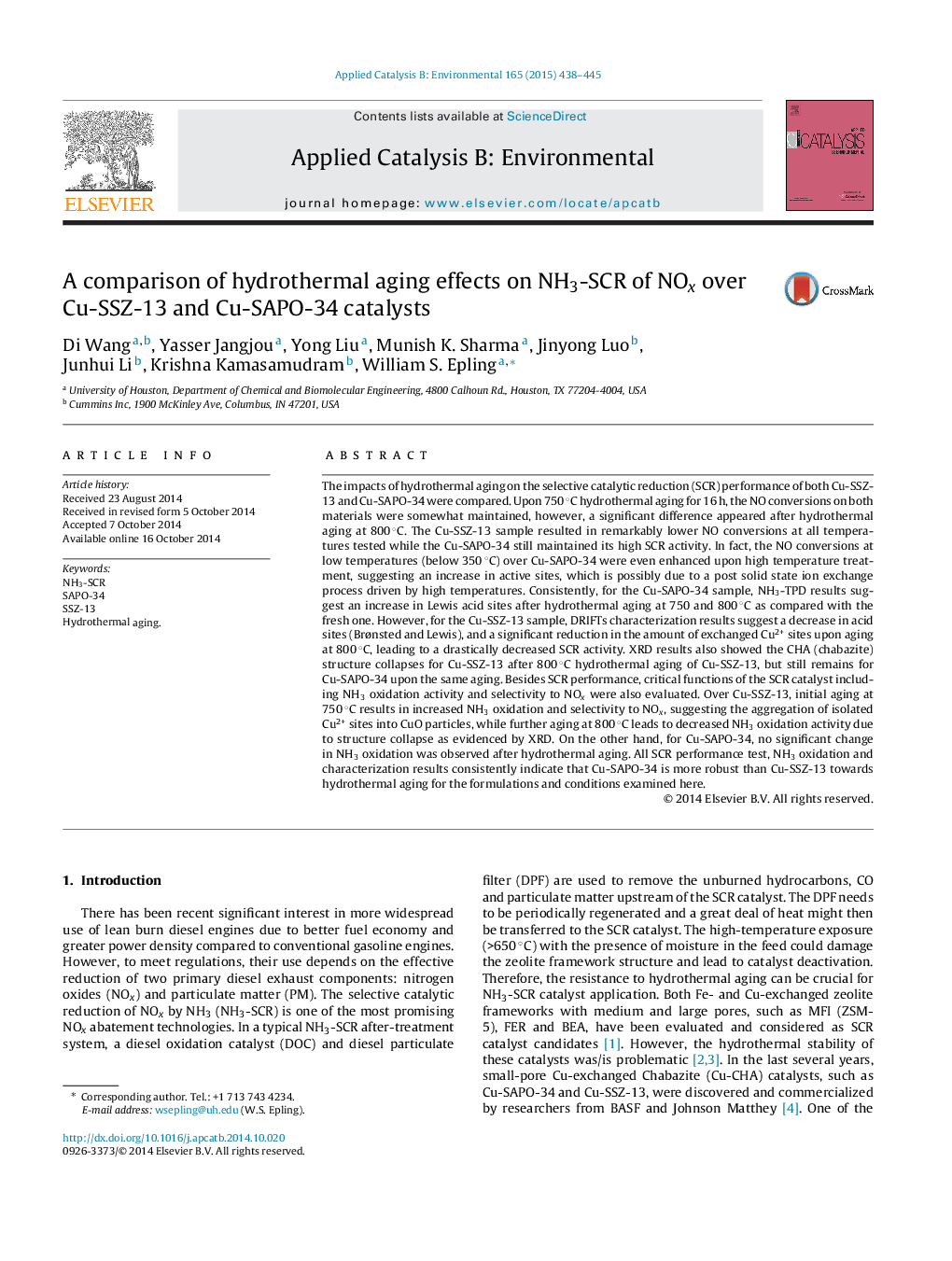| Article ID | Journal | Published Year | Pages | File Type |
|---|---|---|---|---|
| 45574 | Applied Catalysis B: Environmental | 2015 | 8 Pages |
•Cu-SAPO-34 and Cu-SSZ-13 are resistant to 750 °C hydrothermal aging for 16 h.•Cu-SSZ-13 had a significant drop in NOx conversion after 800 °C hydrothermal aging.•Cu-SAPO-34 maintained SCR performance after 800 °C hydrothermal aging.
The impacts of hydrothermal aging on the selective catalytic reduction (SCR) performance of both Cu-SSZ-13 and Cu-SAPO-34 were compared. Upon 750 °C hydrothermal aging for 16 h, the NO conversions on both materials were somewhat maintained, however, a significant difference appeared after hydrothermal aging at 800 °C. The Cu-SSZ-13 sample resulted in remarkably lower NO conversions at all temperatures tested while the Cu-SAPO-34 still maintained its high SCR activity. In fact, the NO conversions at low temperatures (below 350 °C) over Cu-SAPO-34 were even enhanced upon high temperature treatment, suggesting an increase in active sites, which is possibly due to a post solid state ion exchange process driven by high temperatures. Consistently, for the Cu-SAPO-34 sample, NH3-TPD results suggest an increase in Lewis acid sites after hydrothermal aging at 750 and 800 °C as compared with the fresh one. However, for the Cu-SSZ-13 sample, DRIFTs characterization results suggest a decrease in acid sites (Brønsted and Lewis), and a significant reduction in the amount of exchanged Cu2+ sites upon aging at 800 °C, leading to a drastically decreased SCR activity. XRD results also showed the CHA (chabazite) structure collapses for Cu-SSZ-13 after 800 °C hydrothermal aging of Cu-SSZ-13, but still remains for Cu-SAPO-34 upon the same aging. Besides SCR performance, critical functions of the SCR catalyst including NH3 oxidation activity and selectivity to NOx were also evaluated. Over Cu-SSZ-13, initial aging at 750 °C results in increased NH3 oxidation and selectivity to NOx, suggesting the aggregation of isolated Cu2+ sites into CuO particles, while further aging at 800 °C leads to decreased NH3 oxidation activity due to structure collapse as evidenced by XRD. On the other hand, for Cu-SAPO-34, no significant change in NH3 oxidation was observed after hydrothermal aging. All SCR performance test, NH3 oxidation and characterization results consistently indicate that Cu-SAPO-34 is more robust than Cu-SSZ-13 towards hydrothermal aging for the formulations and conditions examined here.
Graphical abstractFigure optionsDownload full-size imageDownload as PowerPoint slide
